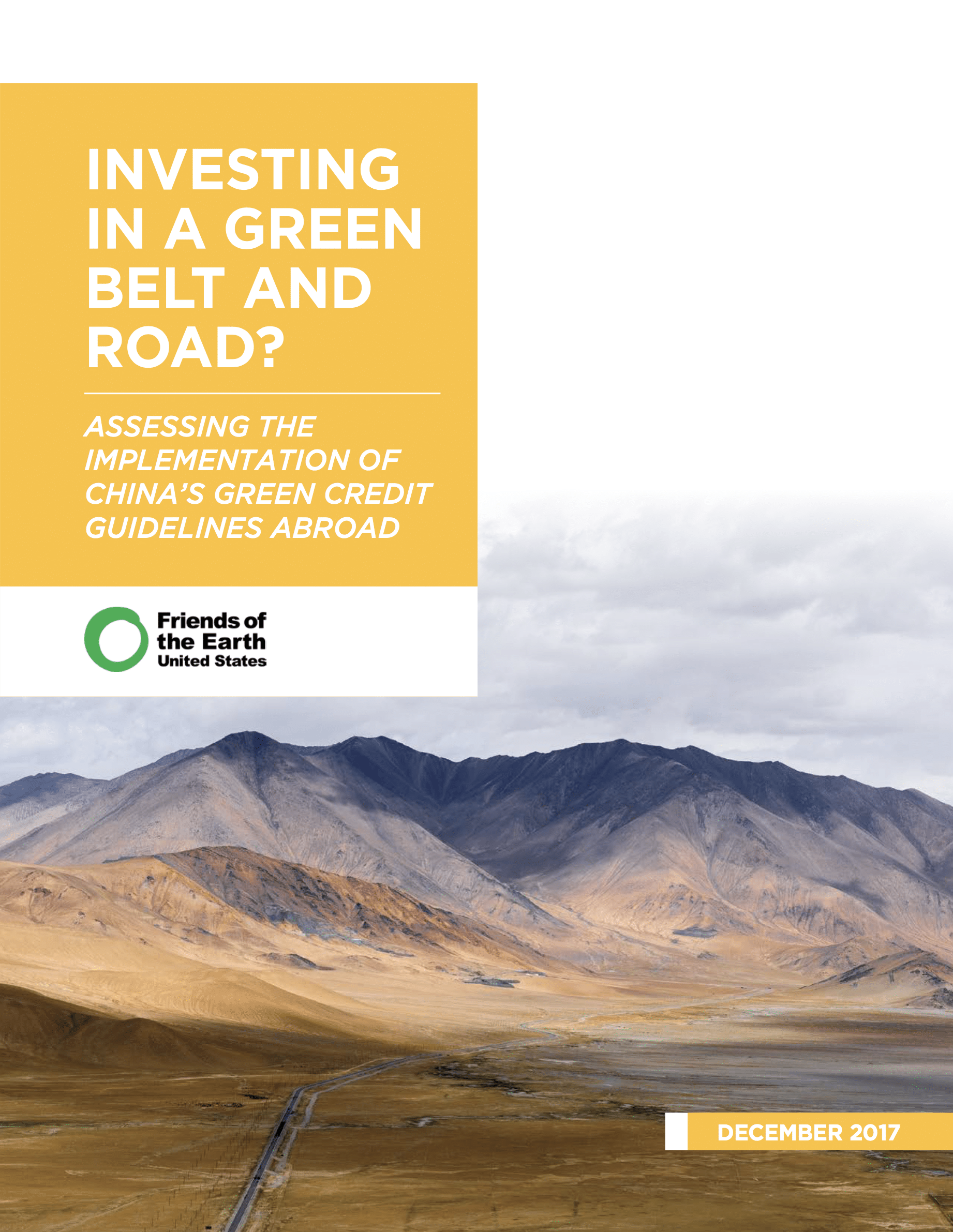- Home
- Sustainable Economic Systems
- Environmental & Social Standards
- Implementation of China’s Green Credit Guidelines
Implementation of China’s Green Credit Guidelines
Download the Chinese translation.
Read the executive summary.
The Chinese government has become an unexpected leader in pushing for new green credit policies, but are Chinese banks doing their part to keep the Belt and Road Initiative green?
In 2012, China’s Green Credit Guidelines (GCG) set a precedent in the world of sustainable finance by obligating banks to comply with host country law and international norms in their overseas lending. Five years since its publication, the GCG still stands as one of the most progressive sustainable finance policies in the world. However, implementation remains a key challenge.
In 2013, China announced the Belt and Road Initiative (BRI), a national strategy calling on Chinese industries to invest in economic corridors from China to Southeast Asia, Africa, Central Asia, and Europe. It will involve more than 60 countries, which is roughly 60 per cent of the world’s population, and may cost nearly $5 trillion USD. These Chinese overseas investments will span across a variety of sectors, including shipping, mining, energy, and infrastructure. The BRI is a major underpinning of China’s economic reform. According to the Chinese government, it is intended to promote development in not only China but around the world. As a result, this second wave of Chinese industries expanding and shifting overseas may indeed lead to increased economic opportunities, but it may also trigger a surge of harmful environmental, social, and climate impacts.
The BRI will be financed by a variety of Chinese, host country, and international institutions, but Chinese banks in particular will play a major role as the financial backbone of the initiative. This also means that Chinese banks are well placed to play a proactive role in helping to keep clients accountable to projects’ environmental, social, and climate impacts.
Promisingly, in 2014, Chinese bank regulators published key performance indicators (KPI) to help banks monitor and measure their implementation of the Green Credit Guidelines. These KPIs provided needed guidance as to how banks should categorize risky projects, when banks should suspend financing, and which international norms and standards should be observed in overseas projects, among other important metrics. Currently, however, banks are only required to assess their level of green credit implementation on an institutional and not project level. Moreover, the BRI further highlights the need for Chinese banks to monitor and measure their environmental and social performance in overseas investments, as required by Chinese banking regulators.
The Report
Friends of the Earth US’s December 2017 report, “Investing in a Green Belt and Road? Assessing the Implementation of China’s Green Credit Guidelines Abroad,” examines Chinese financed projects based on official key performance indicators published by Chinese bank regulators. This report includes the seven following case studies:
- APRIL Pulp and Paper Mills, Indonesia
- Hambantota Port, Sri Lanka
- Jakarta-Bandung High Speed Rail Project, Indonesia
- Lamu Coal Power Plant, Kenya
- Mes Aynak Copper Mine, Afghanistan
- Sasan Ultra Mega Coal Plant, India
- Yamal Liquefied Natural Gas Project, Russia
The Green Credit Guidelines offer China and its banking sector a unique opportunity to make good on their commitment to invest sustainably. But according to our report findings, Chinese banks continue to struggle to meet their obligations to comply with host country law and international norms and standards in their overseas investments.
Key Findings
- Similar to the findings of a 2014 study published by Friends of the Earth US, Chinese banks still struggle to comply with host country laws and regulations, let alone international norms and standards. Of particular concern are international norms related to banks requiring high quality environmental and social impact assessments from their clients, in addition to ensuring that public consultations are conducted based on Free, Prior and Informed Consent.
- Chinese banks continue to have weak channels of communication and engagement with the public and local stakeholders, which significantly undermines the implementation of the Green Credit Guidelines.
- The China Banking Regulatory Commission’s publication of the Key Performance Indicators (KPIs) is a positive first step in promoting better implementation of the GCGs; however, some KPIs ) remain under-developed in regards to advancing the spirit and objectives of the GCG, particularly those relating to international practices and norms, and resolving local conflicts.
- As currently written, the KPIs miss an opportunity to serve as a valuable tool in the global fight against climate change. They should promote one of the international banking sector’s leading climate-related financing norms: curbing coal sector financing.
- Better bank-level and project-level disclosure, including requiring that banks publicly disclose their KPI self-assessments, would promote stronger implementation of the GCGs and thus better environmental and social risk management.
- Chinese banks should better use the GCG as a means to screen and assess how environmental and social risks may in fact undermine the financial viability and feasibility of projects, especially in the infrastructure sector.
Additional Resources from Friends of the Earth U.S.
- “Going Out, but Going Green? Assessing the Implementation of the Green Credit Guidelines Overseas,” Friends of the Earth U.S., November 2014.
- “China’s Belt and Road Initiative: An Introduction,” Friends of the Earth U.S., December 2016.
- “Emerging Sustainability Frameworks: China Development Bank and China Export-Import Bank,” Friends of the Earth U.S., January 2016.

